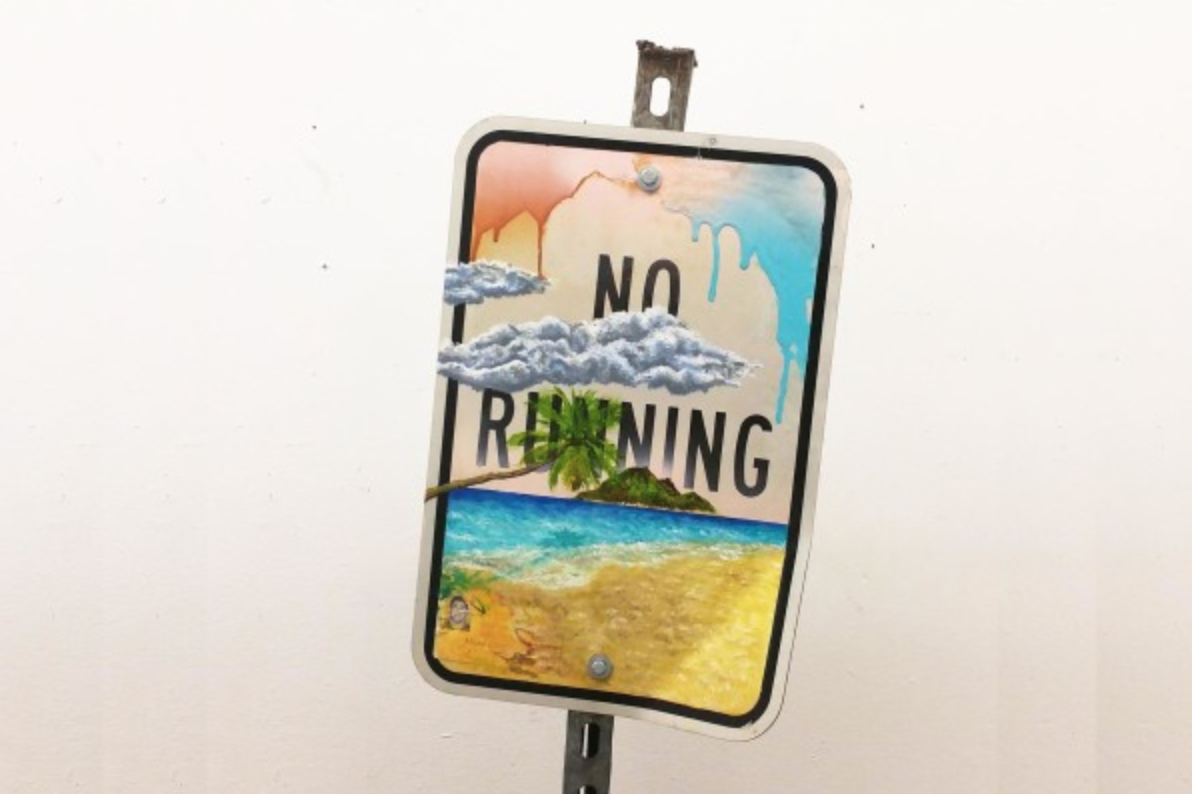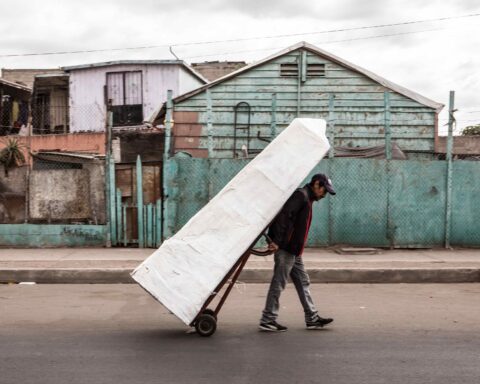Justin Sterling (b. 1992) is a visual artist based in New York. Born and raised in Houston, Texas, Sterling began his practice as a painter and sculptor. He later found interest in a broader range of mediums and received his Master’s degree in Interdisciplinary Fine Arts from Parsons. His chosen medium is the city, which he appropriates to create a poetic storytelling relationship with the urban and domestic, which in turn becomes a catalyst for social, political, and environmental discourse and activism. Sterling has shown work at BRIC in Brooklyn, NY; Foundation Francois Schneider in Wattwiller, France; CampoBase in Turin, Italy; Our Neon Foe Gallery in Sydney, Australia; MoMA PS1 in Queens, NY; 1980 Performance Space New York, New York; University of Rochester in Rochester, NY; and the Australian American Association (AAA) in New York, NY.
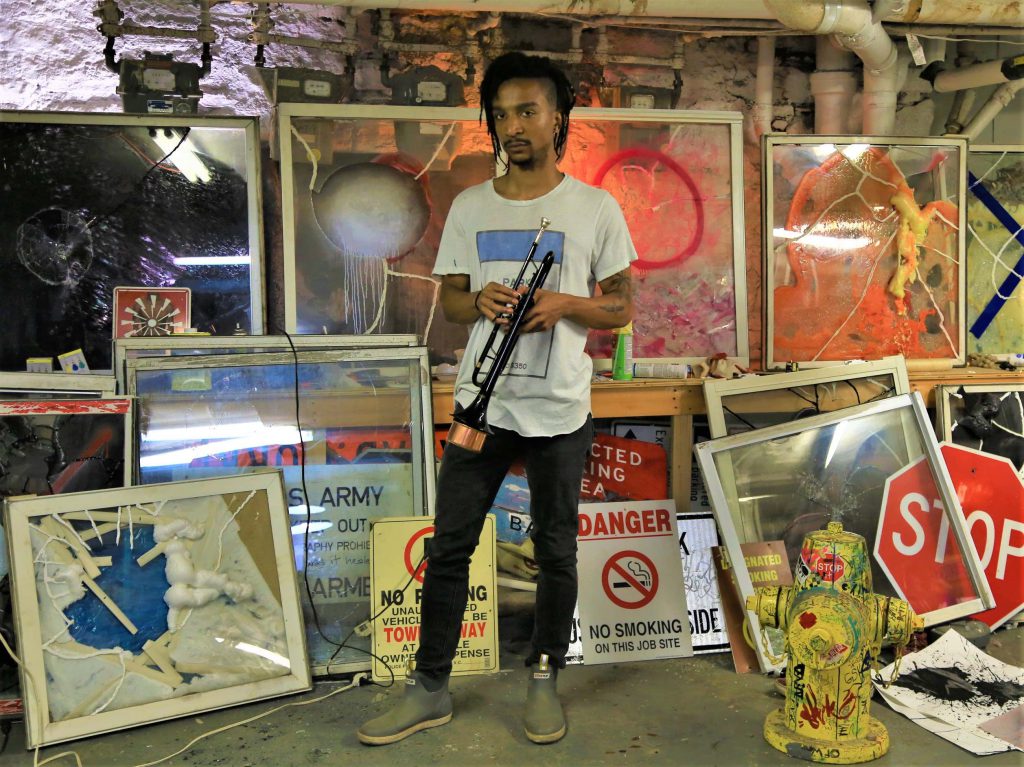
Ginevra Ludovici: Your medium is the city. What is your relationship with the urban context and how do you incorporate it in your pieces?
Justin Sterling: My medium is the city, in other words, I find very specific objects around the city and bring them back to the studio to try to give them a new meaning. These objects often contain social and environmental symbols that tell stories about life to the viewers through their own experience. The object is intended both as a mirror to be reflected or a void to be filled. This is particularly interesting for me in the act of removal and reappropriation of objects from the city, because everyone already has such specific experiences with these objects. When you remove a functional object from its original context, not only does it become useless, but its meaning is trivialized and can be shaped into something new. For instance, the language of fire-hydrants belongs to fire and water and their purpose is to fight fires. I maintain that these hydrants still fight fire, an emotional fire with a burning desire to
keep the flickering flame going; or when the flames break the glass and engulf ceilings, hydrants cry a river. I hope I get people to really notice objects in the street using their intuitive imagination, so that the quotidian objects that I use are seen again in the wild imbued with layered metaphor.
Much of the work has a relationship to architecture or the built environment that surrounds me. With this methodology, I like to travel and scavenge to make work in new places, studying the complexities of crime or lack thereof, settler colonialism, U.S. hegemony, and gentrification along the way. I make what I make based on quick necessity, every aesthetic decision is specific, logical and often practical. Necessity is an important word for my practice. How can a painting be made when you don’t go out and buy a canvas or paint? Most of what I pay for is construction materials and transportation. In fact, my studio costs are very low, otherwise, I probably would not be able to afford to be an artist at all. I simply imitate the language of what I see outside with authentically sourced materials found outside, this allows the objects to fluidly flow from my research into social and political theory. For instance, The Politics of Aesthetics by Jacques Rancière could be said to have been affirmation and prompt to how I think now.
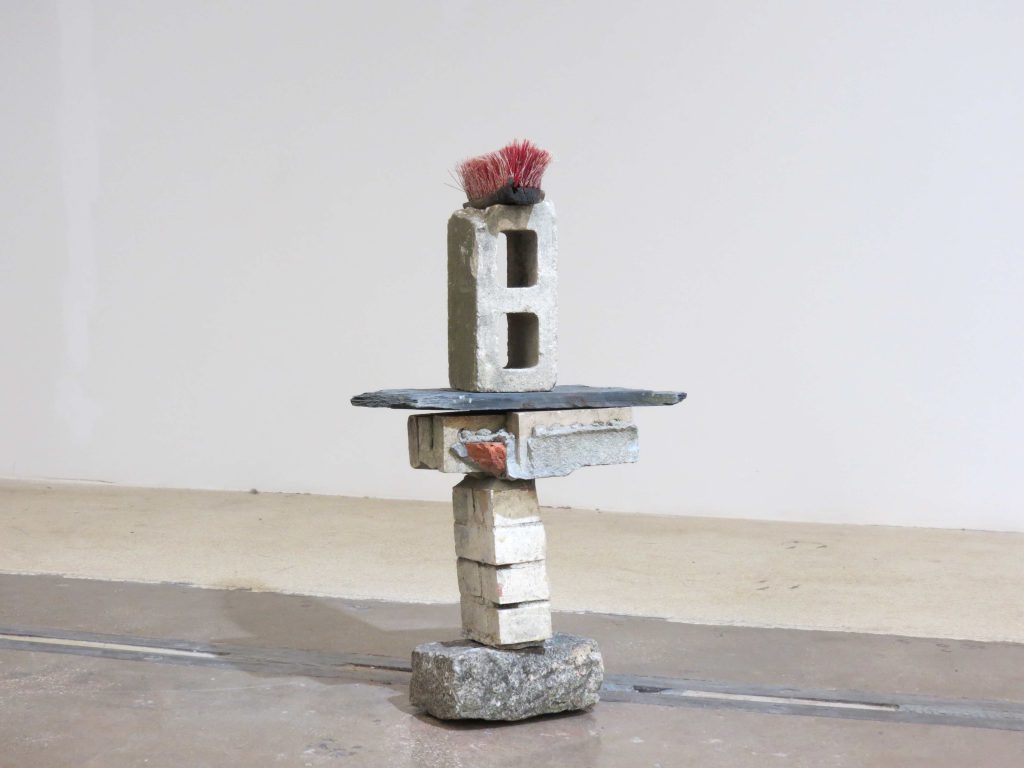
Found stones and rocks, found broom, Courtesy the artist
G.L. As you were mentioning above, you mainly work with installations, but you trained in painting for a long time. How has this language influenced your practice?
J.S. Yes, it’s true I am a traditionally trained painter. I still stand by something an old drawing teacher said when I was studying at the University of Urbino for a semester: “You never truly see something until you try to draw it”. I began painting really when I was an undergraduate student and not before, I was also training privately, teaching myself how to render from photographs while class was teaching me to depict from life and color theory. For a long time, I continued with mostly figurative painting, but studying in Italy for four months and seeing a great number of works in Europe’s most esteemed museums made me frustrated that I was working towards something thousands had done before me just as well or better. Being African American I also saw myself unrepresented in these contexts. This is not a knock to any black figurative painters out there, we need more representation in art, but I did not want to continue to associate myself with a sentimental and colonial style of artistic expression, I was determined to find a new path to originality. Basically, I did not want to paint figures, use the canvas, the frame, or any techniques in any of the ways predetermined by European tradition and apprenticeship throughout the centuries. In a way, going to Italy was my first step in decolonizing my art practice. I didn’t know where it would lead, but I was determined to refuse tradition in favor of something more personally authentic. The language I ended up stumbling upon was the language of necessity. Since I did not want to use canvas, I had to think up other “canvases” that were not originally contextualized as such. This began by collecting street signs and painting on them, it turned into also collecting other objects from the built environment, like fire hydrants and windows. The realization of the historical, social, and metaphorical weight of windows has been a big epiphany for my practice.
G.L. The notion of the window has played a central role in the Western artistic tradition, taking on symbolic implications. For instance, in the De Pictura, Leon Battista Alberti invites to consider the frame of the painting as an open window through which the subject to be painted is seen. In your practice the materiality of the found object itself reveals certain socio-political dynamics and contexts. Did you have any specific reference in mind when you had the “epiphany of the window”?
J.S. Francis Bacon has always been one of my favorite painters, his use of the accident made his work alive and rampant with motifs that devastate the viewers expectations. In a world where practically nothing was original, Bacon showed the world that true accidents can be used to construct a new painting style. It began with me randomly finding windows on the street from demolitions, replacements, and renovations around Brooklyn. Now when I come to the studio to make a new painting, the first thing I do is throw a rock at a window. The accidental and uncontrollable way glass shatters is an act, which before the artist’s hand has entered the work already has all of these social and political implications as well as a new methodology for formal problems that can become aesthetic in their own rights. For me, a broken window conjures up all of these different associations to anarchy, displacement, and a dystopic future. The breaking of a window is an act of rebellion, a symbol of neglect, and a representation of a certain human perspective. I personally think my abstraction is actually realism, all of my aesthetic decisions are based on the necessity to fix something that is broken or neglected. A window is a membrane for information to pass through, the cleaner the glass the less you see the window, the more enthused you are at what you see, the less you see the problems right in front of your face. Black people are the window and the breaking of the window. In this spirit, I probably should declare my compositions with windows, as realism, the only separation between life and art here is your reflection in the pane of glass.
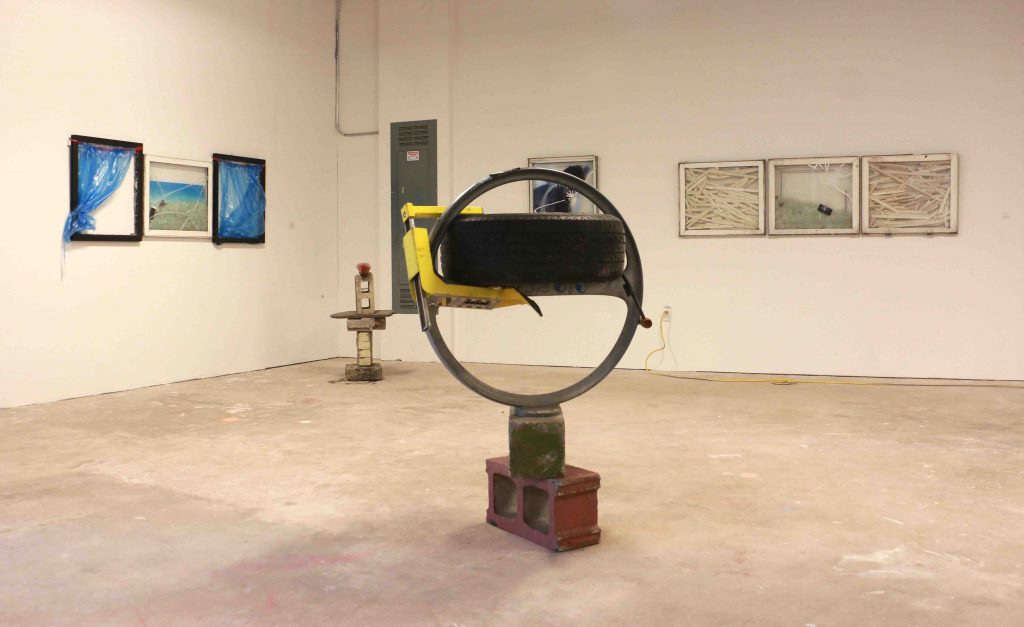
Curated by Sophie Olympia Riese Courtesy the artist
G.L. In relation to this, last June your solo show entitled Broken Windows was organized in New York. Could you tell me more about this project?
J.S. It was a solo exhibition I had in Williamsburg, Brooklyn (a gentrification hotspot), where I showed an installation of city objects and broken windows. Alluding to the umbrella of broken windows policies employed by cops. Taught in criminology classes at universities, the broken windows theory was basically saying that fixing a small crime will fix the larger systemic crime that is happening all the time, thus creating a safer society for everyone to live in. This is the beginning of racial profiling, stop-and-frisk, NYC subway policing, the War on Drugs, police brutality, and the overall degradation of the neighborhood, all falls under the policing of Broken Windows. Last year I was in Italy at an opportune time to see the exhibition City of Broken Windows at Castello di Rivoli by Hito Steyerl. I had just closed my exhibition a week prior, much of Hito’s wall text I regularly say in studio visits, but there were few aesthetics to her words and the conceptual motif of text on the glass of a window was repetitive, not even to the point of redundancy. Its location was also quite reductive. I think that a show like that was all the way in Rivoli speaking about policing issues in cities like Detroit, Chicago, and New York is kind of a missed opportunity for an engaging in productive conversation. Its beauty for me was the message, a direct salute to one of my own aesthetics. It was interesting to see first-hand the many ways art can be made on the subject/object of a broken window.
G.L. You are also a musician, specializing in the use of the trumpet, which you employ in a performative way to activate your pieces. What is your relationship with this instrument and how does that add up to your visual practice?
J.S. I have been playing trumpet since I was 7. I went to a music magnet elementary school in Houston, Texas. I ended up losing interest in early high school and picked it up again when I moved to New York. I have been playing for about 11-12 years now.
I am a student of jazz and listen to hours and hours of it in the studio and around New York City. The instrument is an ancient one, from the stories of the walls of Jericho to the trumpets found inside the tomb of Tutankhamen, the sound of a trumpet has been embedded in culture for millennia. Recently its construction was mastered in brass, but not even Mozart was alive at the time of the modern trumpet. This European instrument came to the New World and was used in military marches and dance clubs, that juxtaposition eventually found its way into ragtime and jazz as we know it today. The 20th century showed trumpet as an instrument that many black men have mastered with virtuosity and finesse musically. This is where I step into this history, the way I look at painting is the way I look at the trumpet, “If you’re gonna do this again, it has to be new”. Marches and dance are central to this modern history of the trumpet and I seek to explore the relationship between musical styles with trumpet, movement, storytelling, and dance. The way I move and what I play defines the grounds for this conversation with the audience. I improvise my body and horn at the same time, often creating new ideas for this medium mid-performance. With a trumpet I am at peace and feel as though I am channeling my ancestors, Louis Armstrong is my favorite trumpet player and I have a late family member who was a famous jazzman, Eric Dolphy. It is a way for me to shake up space and if the occasion arises, activate a visual installation. Performance art is its own abstract language.
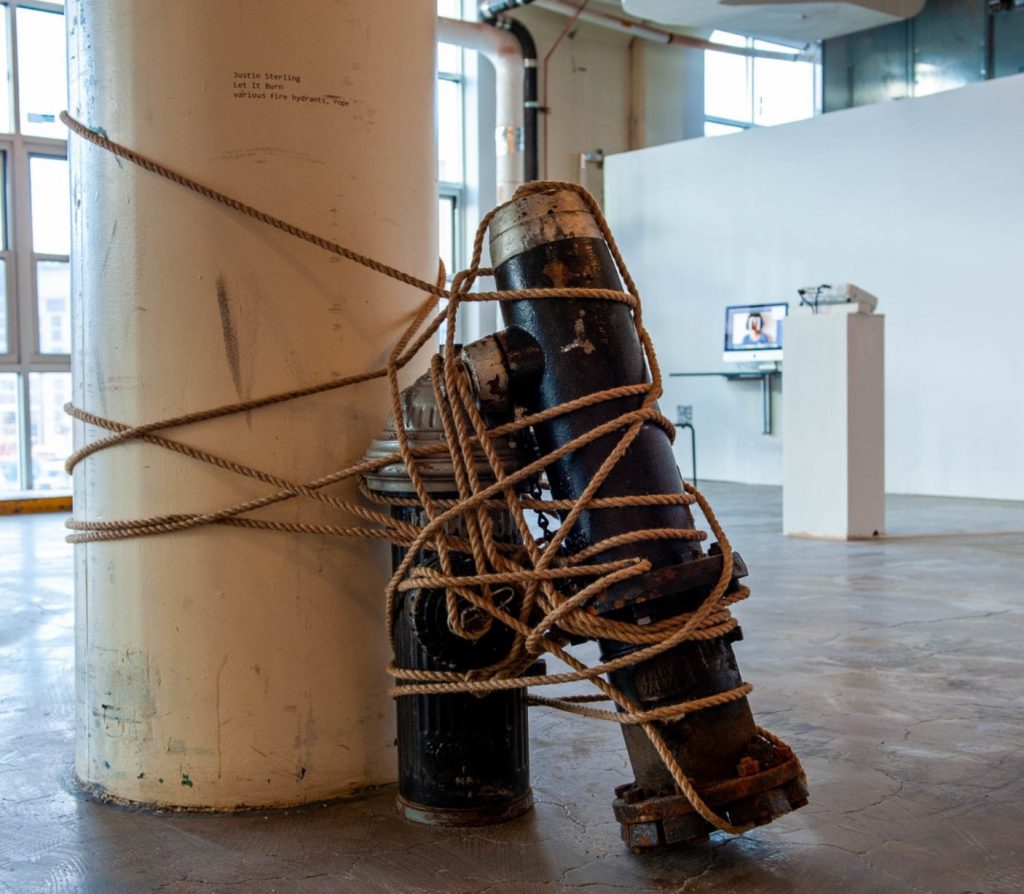
Installation, 2019. Found NYC hydrants, Manilla rope. Courtesy the artist
G.L. How are you coping with the Covid-19 crisis and how does that reflect into your work?
J.S. The pandemic has affected artists heavily, I am no exception. However, one thing didn’t change that much, my studio practice. I am grateful to still have it, a space of solitude and creative meditation away from my home. Ironically, the reason I stopped painting proper oil-on-canvas portraits is the reason I’ve begun again, boredom. The pandemic has been a chance to get to know myself better and reflect on what lies ahead. A show at MoMA PS1 and a site-specific solo show have been postponed until further notice and a residency I was supposed to do in Spain in June may not happen anymore. On top of this, like many artists I haven’t received a check since March, rent is due, and waiting for government aid is something outside of my control. Unprecedented times call for unprecedented measures, so I have decided to do what is in my power to make an income and opened a shop on my website straight from the studio.

Found sign and image transfer Courtesy the artist


